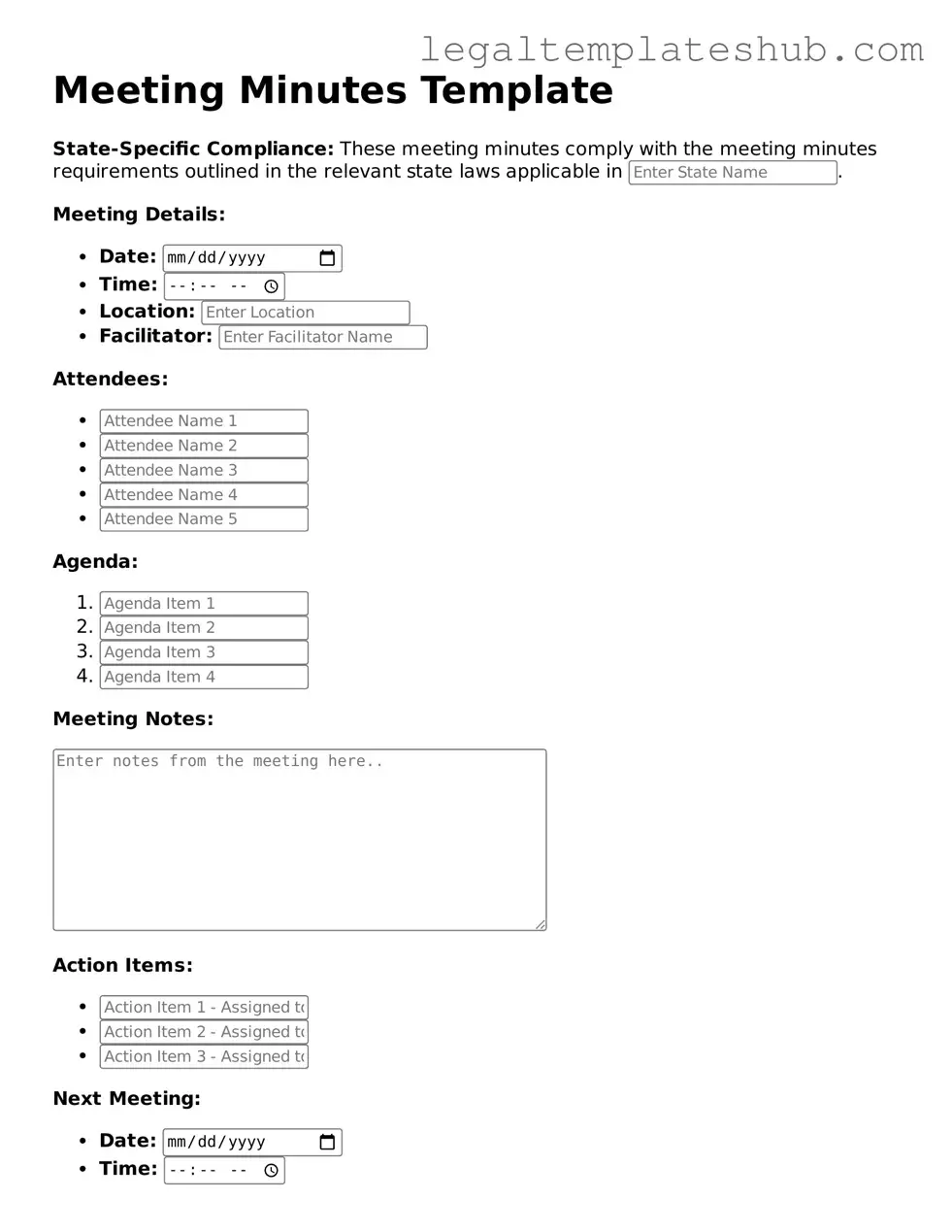Printable Meeting Minutes Template
The Meeting Minutes form is a document that captures the key points, decisions, and actions discussed during a meeting. It serves as an official record for participants and stakeholders, ensuring that everyone is on the same page. To create your own Meeting Minutes, fill out the form by clicking the button below.
Access Editor
